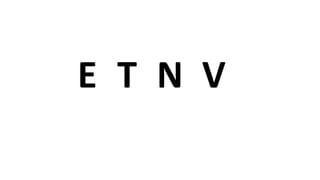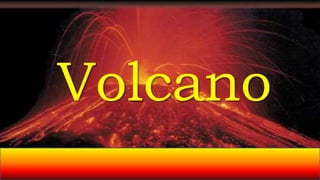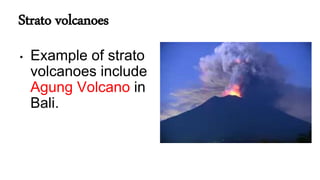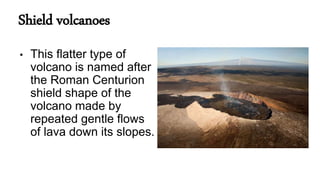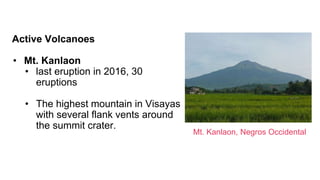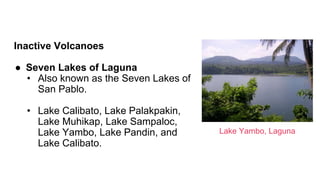This document provides information about volcanoes, including definitions, types, and eruption processes. It begins by defining a volcano and its key components. It then describes the three most common types of volcanoes - stratovolcanoes, shield volcanoes, and caldera volcanoes - and provides examples of each. It distinguishes between active, inactive, and potentially active volcanoes, and lists some of the most notable examples in the Philippines. Finally, it outlines different types of volcanic eruptions and describes the hazards they can produce, such as pyroclastic flows, volcanic bombs, and lahars.





